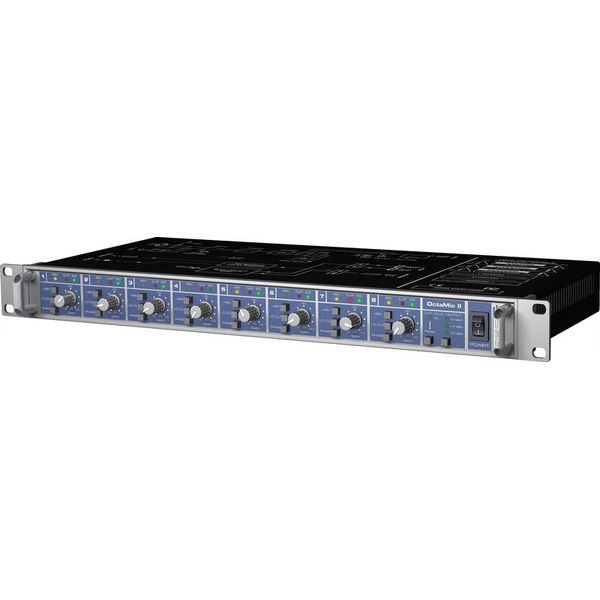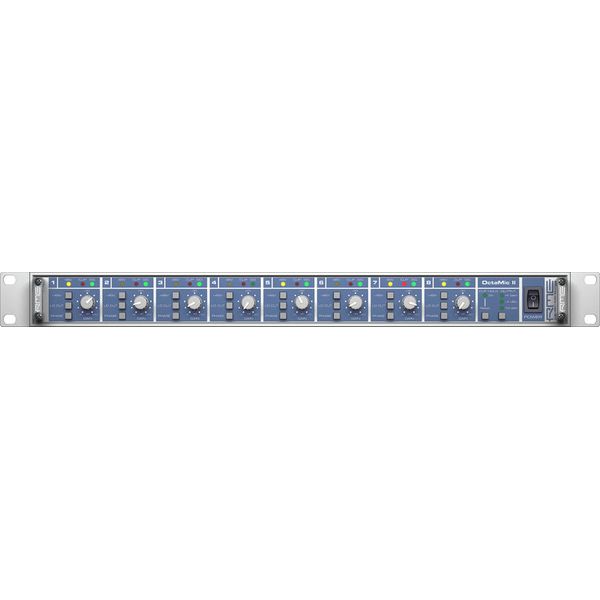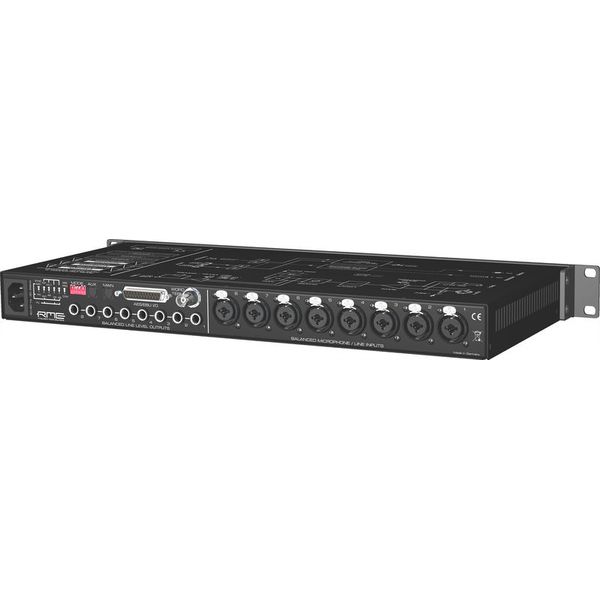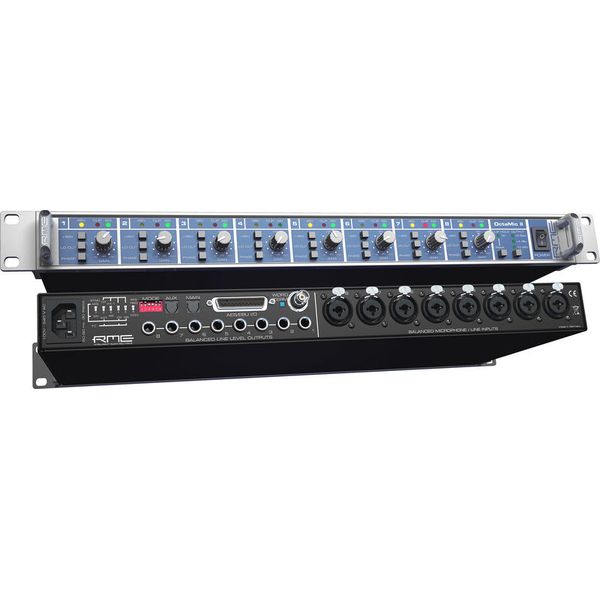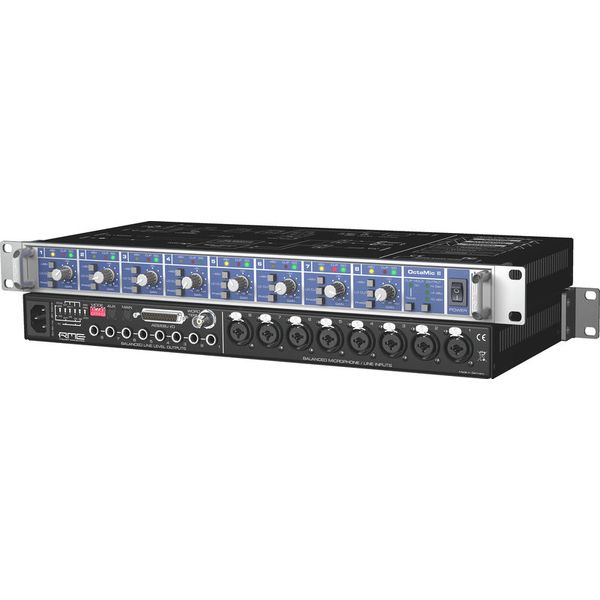This is the old one mic amp, but it is really, really great.
It may be a bit awkward to have manual control, but it doesn't change the recording quality.
Comparison Octamic II vs UFX+ Preamps and AD converters.
1) The OctamicII preamp analog output to UFX+ analog input is a bit "warmer" than UFX+ mic input, but the difference is almost inaudible.
2) The OctamicII AD converter via ADAT to UFX+ is a little more transparent than OctamicII preamp analog output to UFX+ analog input, but the difference is very, very small.
3) The OctamicII preamp and AD converter via ADAT is a bit, bit more flaten than UFX+ preamp and AD converter, but the same - difference is practically inaudible.
Summary:
This is a really great mic preamp!
How I get 4 bonus channels.
For 96kHz recording I use OctamicII 4 channels via ADAT (like 2 stereo or 4 mono channels ) and 4 channels through analog outputs.
For example:
It is possible to connect OctamicII 5, 6, 7 and 8 analog outputs to UFX+ analog inputs using channels 1, 3, 5 and 7 with "MS Proc" and "FX" (Reverb and/or Echo) processes (as 4 stereo channels) where the 2, 4, 6 and 8 is virtual for stereo effects. Octamic 1, 2, 3 and 4 channel via ADAT. This gives me a total of 12 usable channels (instead of 8 channels) for recording, only thanks to connections. Together with UFX+ I can use 16 mono channels where 4 of them are for virtual FX process.(Don't forget to use only great cables).
And one more thing. This interface works also on DC230V (Direct Current) power. In our studio, to avoid electromagnetic emission which may cause background noise and of course to feel better, we use 230 Volt DC. You will need electrical engineer to consult before use it in your area.


